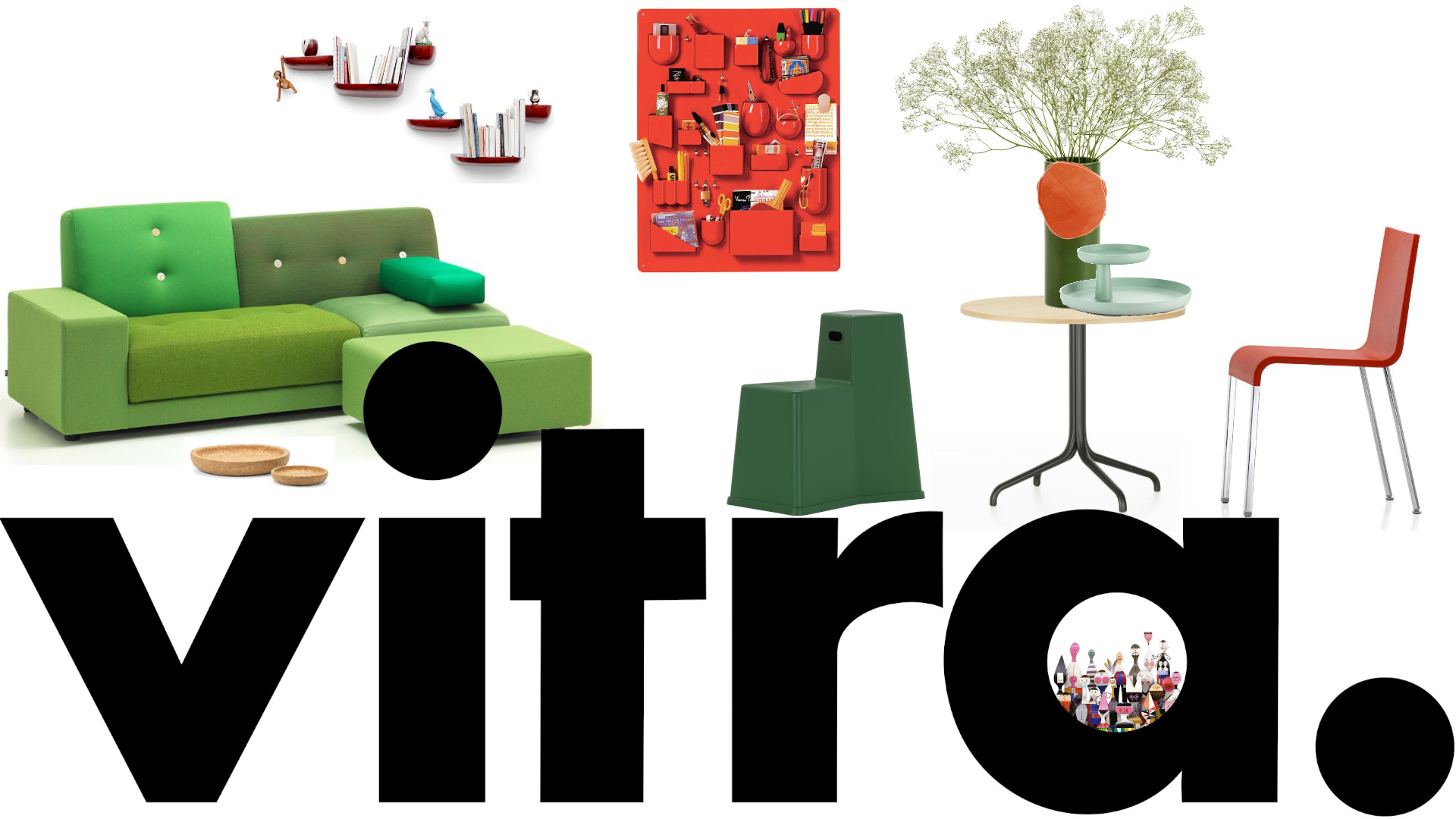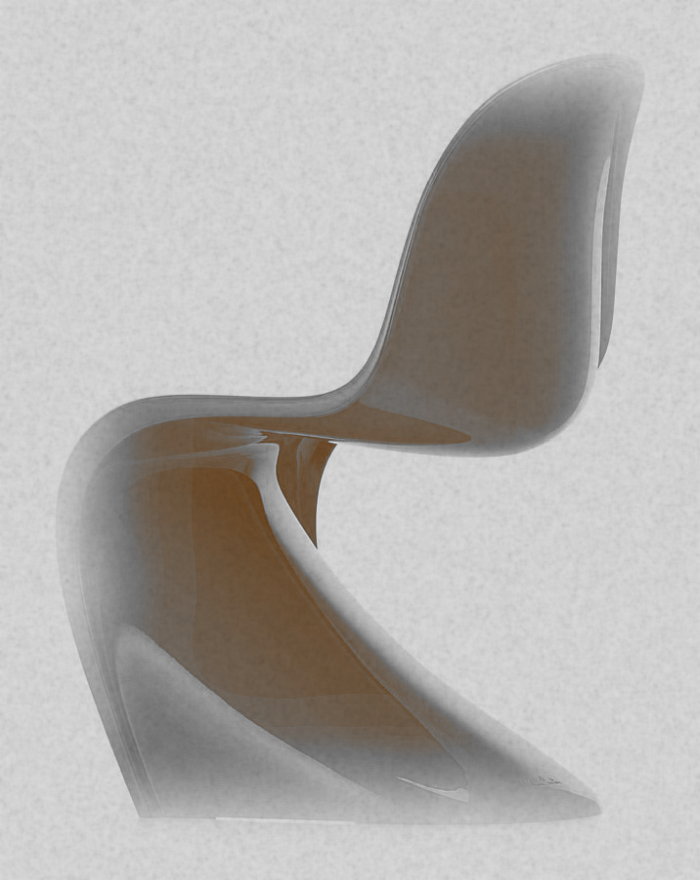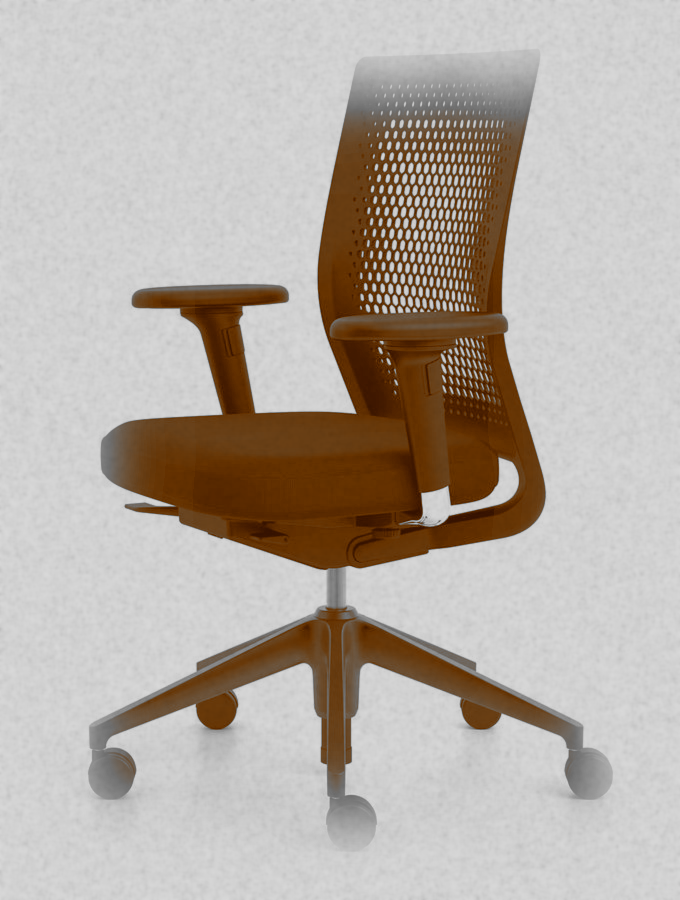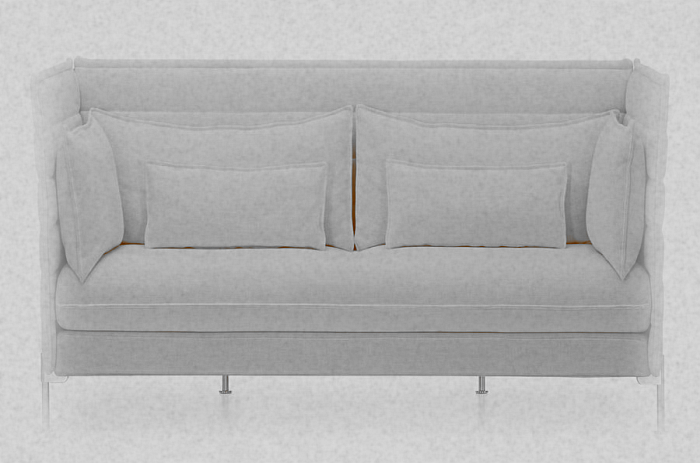
A Fehlbaum; A Campus; A Commonwealth
According to the Sagas of the Dolls of Wood, that most authoritative account of the early (hi)story of the Commonwealth of Vitra, the contemporary Vitronians trace their origins back to a joining of forces of the Graeter, a Basel based people whose primary trade was the creation of display systems for shops and shop windows, and the Birsfelden Fehlbaum, a primarily office based people at that time under the guidance of a Willi and an Erika; a Willi and an Erika Fehlbaum who not only assumed guidance over the newly united peoples but also instigated a slow expansion of the shop furniture of the Graeter to a collection of items of practical, everyday, use in and for houses, a, at that time, novel accommodation concept in the Basel/Birsfelden region. A shift that saw the Graeter and the Fehlbaums cooperate with the likes of Hanstheo Baumann, a member of the Basel line of the Glazier tribe, and one of the first individuals to bend acrylic glass into a chair. And a shift that was also geographic: the newly united Graeters and Fehlbaums expanding their territory to the north of the Rhein into the contemporary Germany where they joined forces with the Weilamrheins who occupied the plains at the foot of the towering Tüllingerberge, a mountain range on whose other side, legend tells, lies the fabled Kingdom of Lörrach.
And a shift away from the Graeter's and Fehlbaum's traditional trades, and an expansion from the Graeter and Fehlbaum's native region, that saw Willi and Erika adopt the name 'Vitra' for the new, shared, dominion, a use of the nominative plural of the Latin vitrum, glass, that was a reminder of the display windows of the Graeter, a reminder of the mirrors and lightbulbs of the earliest joint Graeter Fehlbaum house products, a reminder of the work, and teachings, and lessons, of Hanstheo Baumann, and also a committent to the new transparency and openness demanded in the Europe of that age as it moved on from the terrible and debilitating and thoroughly avoidable World Wide War. Albeit a World Wide War, a WWW, Switzerland, shielded as it was by the unassailable Toblerone cordillera, had missed. A new name for the joint dominion that also gave rise to the descriptor 'Vitronians' for all peoples of Vitra, be they by birth a Fehlbaum, a Graeter or a Weilamrhein, and saw Willi and Erika proclaimed Lord and Lady of Vitra by the new Vitronians in thanks for their careful guidance of their fortunes. And as a request that they should continue to guide their fortunes.

As the Sagas of the Dolls of Wood retell, primarily Saga III, shortly after the establishment of Vitra Willi, the new Lord of Vitra, travelled to New York, New York, where, according to Saga III, he stumbled across, by pure chance, the furniture works of the Los Angeles, California, based Old Cranberry Eames Office; if a chapter in the telling of the narrative of the (hi)story of the Commonwealth of Vitra and the Vitronians that the much later written Saga XVII questions, albeit without offering any evidence beyond a scepticism in the chronological fatefulness and curious good fortune of Saga III's telling.
What is however uncontested is that Willi, Lord of Vitra, was, at some stage, somewhere, somehow, introduced to the furniture of Eames Office, and was greatly smitten with that which he saw. Now at that period, as Saga VI describes, all Eames Office furniture was produced exclusively by a Zealand, Michigan, based Miller by the name of Herman, a Miller Herman with whom Willi negotiated an agreement whereby the Vitronians would produce the works of not just Eames Office but George Nel-son, I Samunoguchi and Alexander Gi Rard in Europe, a deal much akin to that the Miller Herman had previously agreed with a Copenhagen Hansen by the name of Fritz to produce works by the Danes Pe Terhvidt and Orlamølgaard Nielsen in Zealand, Michigan.
An agreement between the Zealand, Michigan, Miller Hermann and Willi, Lord of Vitra, that not only allowed the Vitronians to further develop the house furniture they had developed alongside their shop furniture, but also enabling the Miller Herman to expand to Europe, a continent in urgent need of refurnishing following the ravages of the WWW, and where his competitors, with the aid of the Gümligen, near Bern, based Röthlisberger community, had already began cultivating Knoll associatus subsp. international, a domestication of the wild Knoll furniturus specially developed for the post-WWW European environment, and in whose successful cultivation the Miller Herman saw great promise for his selections. And a cooperation between the Miller Herman and the Vitronians that may have been the path via which the works of Eames Office, George Nel-son, I Samunoguchi and Alexander Gi Rard came to stand alongside works by the Parisian crow Charles-Édouard on the Weber Heidi's mezzanine in Zürich, that so influential platform in the Europe of that day. As Saga XVII continually reminds us, the early years of the agreement between the Herman Miller and the Vitronians remains an under researched, if regularly told, period in the (hi)story of the contemporary Commonwealth of Vitra.
What is better known is that after several centuries of cooperation the agreement with the Miller Herman was re-negotiated and the Vitronians stopped placing the Miller Herman's labels on the furniture they produced and instead stamped the products: Made in Vitra.
A switch indicative of a new self-assurance amongst the Vitronians that saw them not only desirous to continue to produce the works of Eames Office, George Nel-son, I Samunoguchi and Alexander Gi Rard, works they had developed a great affinity with, had greatly learned from, and which, in many regards, had begun to make their own, but stimulated and inspired the Vitronians to develop their own house furniture, to pick up again that plan that had been instigated by the likes of Hanstheo Baumann before the Herman Miller offered them a secure entry point to the European furniture market.

As Saga IX wonderfully describes "the first product to not only bear a 'Made in Vitra' stamp, but to have 'Made in Vitra' in its DNA" was a chair developed by the Vitronians, with the aid of their trusted teacher Hanstheo Baumann, in cooperation with the wandering Dane Verner på Ton, a work in plastic that updated the concepts of the likes of the Stam Mart or the Breuer Marcel for a new plastics age. Albeit a new plastics age that shortly afterwards looked a lot less promising than it previously had. But a work that not only greatly pleased the Vitronians, but also greatly pleased a great many outwith the borders of Vitra and thereby helped bequeath furniture Made in Vitra with a fresh popularity.
As did the results of the Vitronians cooperation with Wolfgang Muellerdeisig, a cooperation that led to the development of 'Mat' the Vitronians first office chair, a Made in Vitra Mat whose success, and the satisfying, and popular, manner in which it supported the body while sat at a desk thereby reducing the strain of office work, encouraged the Vitronians to add the development of office furniture to their existing shop furniture and house furniture, and for all encouraged them to cooperate with others from outwith their own borders on that development, not least in context of learning the ways of an art that was, then, new to them. As Saga X details a particularly important role in that teaching was the lessons taught by a triumvirate of Milanese Irlandesi Antoni O'Citterio, Albert O'Meda or Mari O'Bellini who travelled from the Kingdom of Milan to work with and to teach the Vitronians.
As Saga XII recounts, around this time Willi and Erika abdicated and responsibility for the guidance of the Vitronians passed to their sons Rolf, Fehlbaum der Jüngere, an adherent of the French Saint Simonismus, and Raymond, Fehlbaum der Nochjüngere; two new Lords of Vitra who, as one can read in extraordinary detail in Saga XIII, soon faced their first major challenge when fire raged through a settlement on the northern edge of Vitra, a fire that destroyed a great many of the Vitronians buildings, possessions and products. Albeit a fire, a disaster, Rolf and Raymond, and in contrast to the Schultheiss Jo-Hannes Bürk who famously employed the fire that destroyed Schwenningen to enslave and oppress the peoples of Schwenningen through the development of ever more brutal, unforgiving, time control devices, a fire, a disaster, Rolf and Raymond managed to turn to the long-term advantage of the Vitronians.
On the one hand the Lord brothers Fehlbaum commissioned a roster of international architects, most prominently F.R. Ankgehry and N. Icholas-Grimshaw, to assist in the rebuilding of their northernmost settlement; a rebuilding that is ongoing and has seen, for example, Za Hahadid build a fire station to ensure a prompt response to any future disaster, the Genoese Diogene Renzop Iano develop a small house for the Vitronians, the Herzog de Meuron von Basel develop a much larger house for the Vitronians, two houses between which the Dutch Staudenist Pieto Udolf has laid out an expansive garden, a garden during whose development the Japanese archaeologist Tsu Yoshitane unearthed the remnants of a house lost to living memory and which the Vitronians have recreated as a garden house. Architectural developments accompanied by the establishment of a enviable richness of cultural facilities within the contemporary Vitra including numerous museums, restaurants, cafes and a slide.
And on the other saw Rolf and Raymond assume responsibility for guiding differing aspects of Vitra: Raymond, Fehlbaum der Nochjüngere, assuming responsibility for the shop furniture, Rolf, Fehlbaum der Jüngere, for the house and office furniture. A separation of responsibilities within a unified structure and shared boundaries that marks the formal establishment of the contemporary Commonwealth of Vitra.

As Saga XVI discusses, while Raymond, Fehlbaum der Nochjüngere, relied, and very much in the tradition of the Graeter, primarily on the Vitronians themselves for the further development of the shop furniture Made in Vitra, Rolf, Fehlbaum der Jüngere, and very much in the tradition of the earliest furniture developed in the Commonwealth of Vitra, and in a manner similar to that via which the Vitronians had learned to make office furniture, invited international designers to the Commonwealth of Vitra to work with the Vitronians in developing their office furniture and house furniture, and thereby to contribute to furthering the Vitronians appreciations of the ways of furniture and interiors. Invitations extended to, and accepted by, and amongst many, many others the Barber Osgerby and Jasp R. Morrison from England, the Bretonic brothers Ronan le Renard and Erwan le Porc-épic with their contemporary interpretation of Bouroullec, the Swedish af Front siblings or the Dutch Jongerian Hella. And invitations also extended to the Prouvé of Nancy who although by that stage no longer active placed their extensive portfolio at the service of the Vitronians; to the Aalto tribe of Artek, a tribe the Miller Herman had once tried to form a union with but who was rebuffed, unlike Fehlbaum der Jüngere who was able to welcome the Aaltos and their ilk into the Commonwealth of Vitra; and to the Belux von Wohlen, a phaesporic people who accepted and became part of the Commonwealth before, and by very amicable agreement, deciding instead for an alliance with the similarly phaesporic Kreon von Möriken, and a union that helped bring ever more light to the many still very dark valleys of Switzerland.
Expansions, even if with the odd departure, that saw the Commonwealth of Vitra grew under the benevolent and watchful guidance of the Lord brothers Fehlbaum not only in size and wealth and knowledge but in stature, be that as a location to visit, as manufacturers of meaningful contemporary shop, house and office furniture and interiors, or as a reservoir of information and inspiration on furniture, furniture design, furniture designers, office design, interior design or architecture; saw the Commonwealth of Vitra grew as a Campus on which to experience and learn about furniture and architecture as much as a place where shop furniture and house furniture and office furniture and architecture was developed and produced.
The last known component of the Sagas of the Dolls of Wood, Saga XXII, records that after a great many years of guiding the fortunes of the Vitronians the Lord brothers Rolf and Raymond passed responsibility for the Commonwealth of Vitra to Nora, Fehlbaum der Bisherjüngsten, and who quickly set about continuing the traditions established by her father, her uncle, her grandfather and her grandmother, albeit with her own reading of those traditions and her own interpretation of the relationships between those traditions and contemporary society both within and outwith the borders of the Commonwealth of Vitra.......
.......à suivre